
If you walked into a particle or nuclear physics center, like the world-renowned CERN, you may come across a magnetic quadrupole lens (after security clearance, I would imagine). Here, we’re going to discuss what magnetic quadrupole lenses are and study the focusing effect three consecutive quadrupole assemblies have on B5+ ions traveling through such a lens.
Magnetic Lenses
Magnetic lenses are utilized for focusing or defocusing beams of charged particles, such as ions and electrons. The applications they can be found in are diverse — from particle accelerators to cathode ray tubes.
The lenses consist of multiple magnets or electromagnets that can be arranged in various formats, including quadrupole or sextupole. Today, we’re going to study the focusing effect magnetic quadrupoles have on ions traveling through a magnetic lens.
Magnetic Quadrupoles
A magnetic quadrupole consists of four permanent magnets that are arranged perpendicular to one another, such that the north pole of one magnet is next to the south pole of another, similar to the image below.
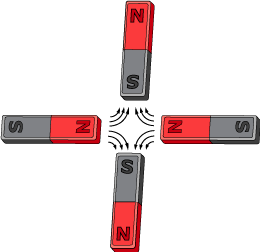
A quadrupole arrangement of permanent bar magnets.
The Focusing Ions with a Quadrupole Lens model serves as a good example of how you can study the focusing effect magnetic quadrupoles have on B5+ ion particles traveling through a magnetic lens.
Studying the Focusing Effect
The geometry of our example model consists of three consecutive magnetic quadrupoles. The middle quadrupole is twice as long as the other ones and is rotated 90 degrees, reversing its polarities. Surrounding the magnets is an iron cylinder that is used to strengthen and contain the produced magnetic fields. Following the quadrupoles is 1 meter of empty space, where the ions, which are fed through the lens by an accelerator, are left to drift.
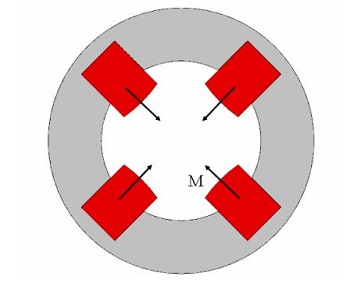
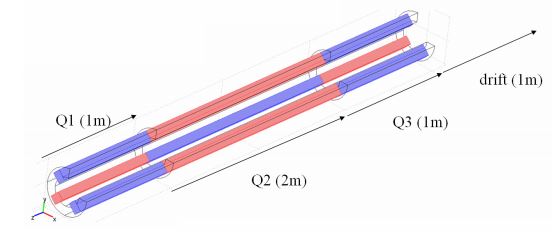
2D cross-sectional view of a magnetic quadrupole surrounded by the iron cylinder (left). 3D cutout of the quadrupole lens (right).
The AC/DC Module features a set of interfaces that help us study the focusing effects magnetic quadrupoles can have on ions. It allows us to calculate the forces on the ions by using all components of their velocities. Additionally, the module features an equation for magnetostatics without currents, which substantially and conveniently reduces computational memory compared to formulations including currents.
Results
In the image below, the necessary formulas have been applied and the model has been solved.
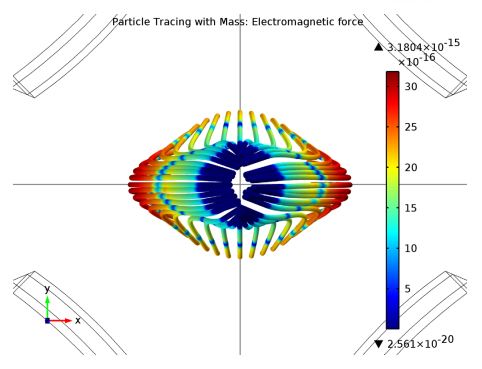
Particle tracing plots of the ions (requires the Particle Tracing Module). The magnetic forces on the ions are shown by the line colors.
We can gather that the effect the three magnetic quadrupoles have on the ions results in focusing in all directions. The force on each ion is approximately proportional to its distance from the z-axis. The red color tells us that the magnetic force grows stronger farther away from the center of the beam. The blue color conveys that the force is weaker at the point where the two oppositely polarized quadrupoles are joined.



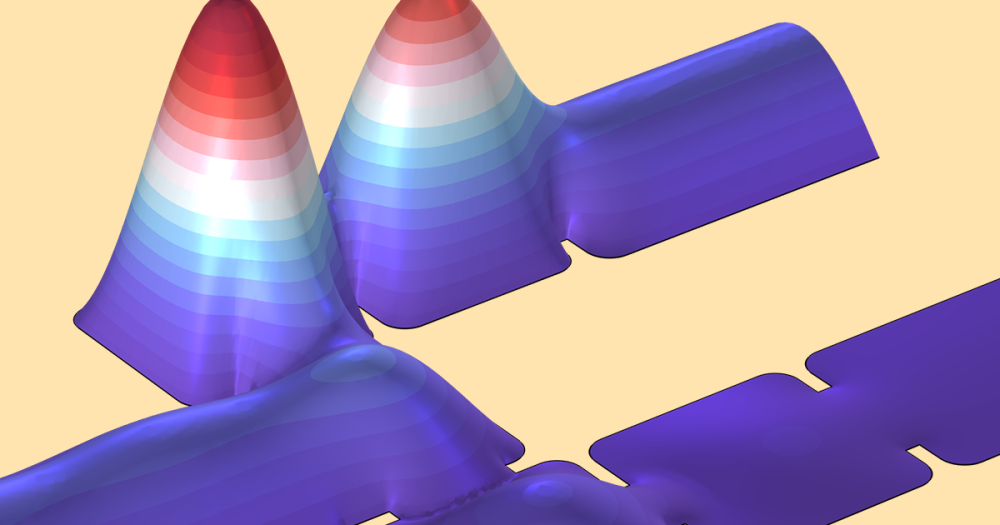


Comments (0)